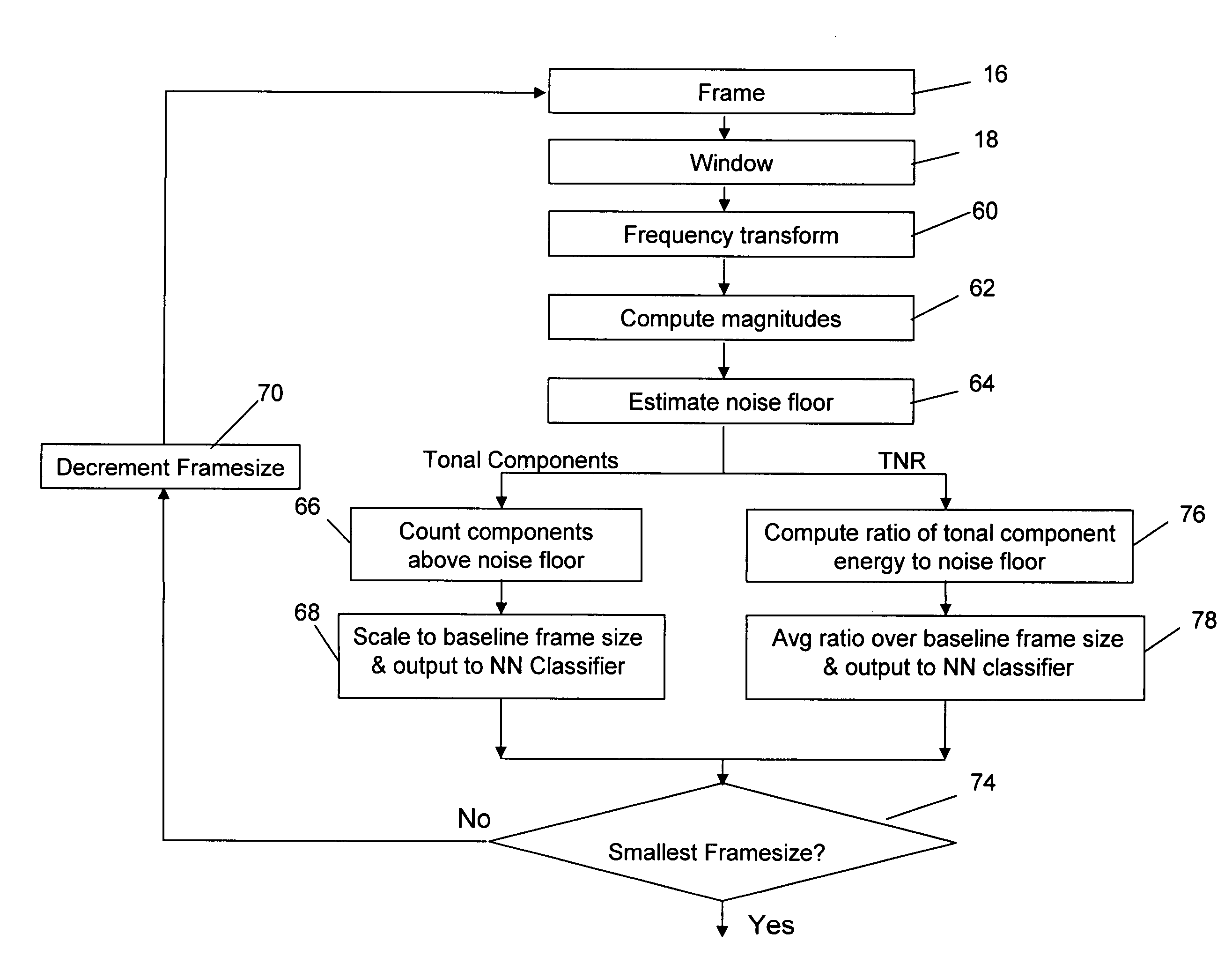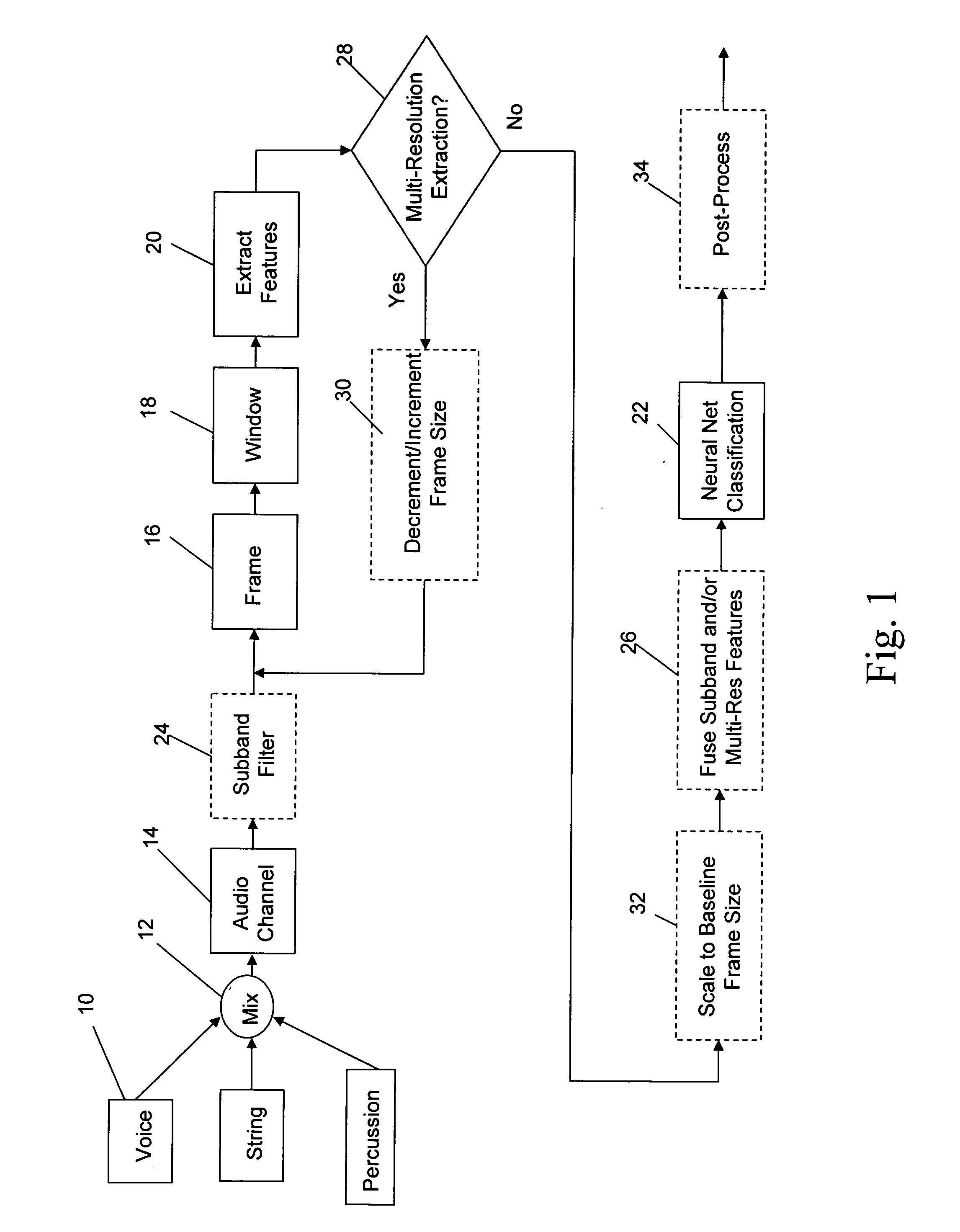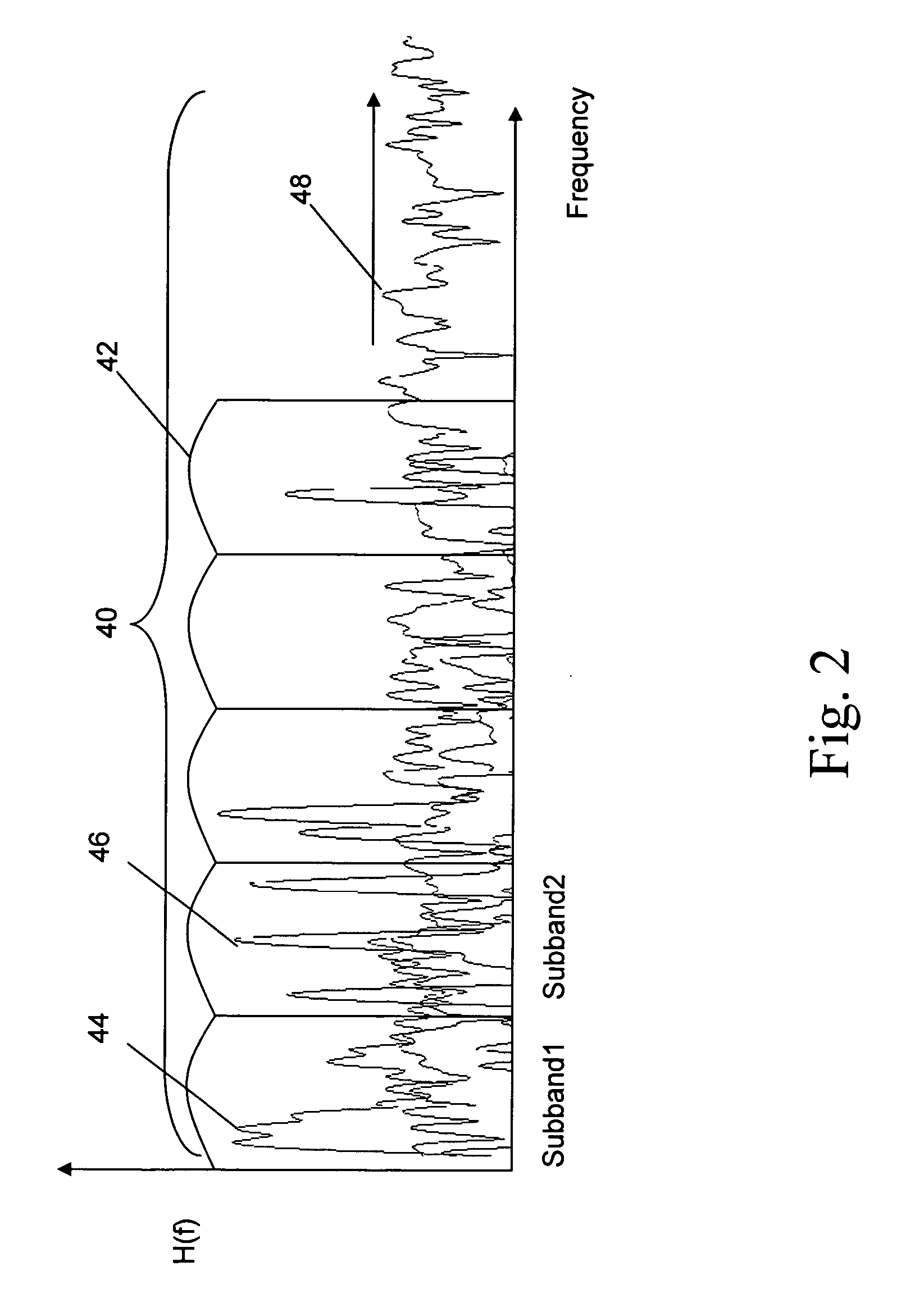Neural network classifier for separating audio sources from a monophonic audio signal
- Summary
- Abstract
- Description
- Claims
- Application Information
AI Technical Summary
Benefits of technology
Problems solved by technology
Method used
Image
Examples
Embodiment Construction
[0026] The present invention provides the ability to separate and categorize multiple arbitrary and previously unknown audio sources down-mixed to a single monophonic audio signal.
[0027] As shown in FIG. 1, a plurality of audio sources 10, e.g. voice, string, and percussion, have been down-mixed (step 12) to a single monophonic audio channel 14. The monophonic signal may be a conventional mono mix or it may be one channel of a stereo or multi-channel signal. In the most general case, there is no a priori information regarding the particular types of audio sources in the specific mix, the signals themselves, how many different signals are included, or the mixing coefficients. The types of audio sources which might be included in a specific mix are known. For example, the application may be to classify the sources or predominant sources in a music mix. The classifier will know that the possible sources include male vocal, female vocal, string, percussion etc. The classifier will not ...
PUM
 Login to View More
Login to View More Abstract
Description
Claims
Application Information
 Login to View More
Login to View More - R&D
- Intellectual Property
- Life Sciences
- Materials
- Tech Scout
- Unparalleled Data Quality
- Higher Quality Content
- 60% Fewer Hallucinations
Browse by: Latest US Patents, China's latest patents, Technical Efficacy Thesaurus, Application Domain, Technology Topic, Popular Technical Reports.
© 2025 PatSnap. All rights reserved.Legal|Privacy policy|Modern Slavery Act Transparency Statement|Sitemap|About US| Contact US: help@patsnap.com



